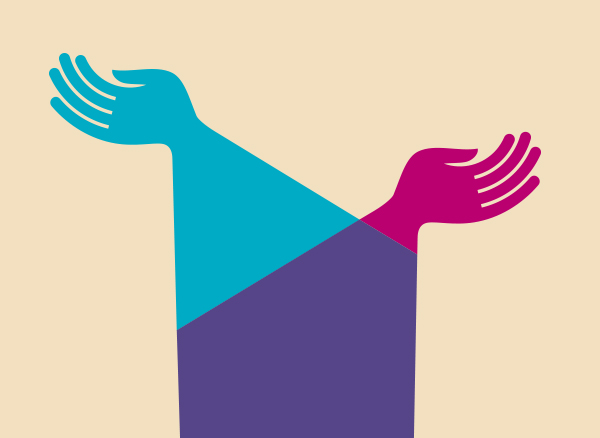What role can faculty play in addressing sexual violence on their campuses?

In 2015, the Ontario government released It’s Never Okay: An Action Plan to Stop Sexual Violence and Harassment (2015). The action plan provides a list of concrete steps that the government is taking to end sexual violence and harassment in all aspects of our lives. A key pillar of the plan is focused on safer campuses
We want to eliminate rape culture on campus. We want school environments to be safe and respectful. We want every student, in every university and college in Ontario, to be able to learn and study and experience campus life at its finest, free from sexual violence and harassment. (page 27)
The action plan was followed by Bill 132, which requires that all Ontario universities and colleges have standalone sexual violence policies and procedures as of January 2017. As a result, faculty have likely seen a significant increase in the number of communications about sexual violence at their own institutions. This article provides an overview of the issue of sexual violence on campus, and considers the question of this issue in relation to the work of professors and academic librarians. As a caution, this article discusses the high rate of sexual violence, sexual assault, and rape on campuses and in our broader communities.
Sexual violence in our communities
I am a faculty member who is directly engaged in sexual violence prevention work on university campuses. In July 2015, I was appointed to a three-year term as a Gendered Violence Faculty Colleague (GVFC) at Wilfrid Laurier University. Currently, three faculty colleagues at Laurier work closely with senior campus leaders and the university’s Gendered Violence Task Force to engage in strategic planning and decision-making about how to best prevent and address gendered and sexual violence at the university.
When I talk to people about this work, both inside and outside of the university, the response is usually quite supportive.1 I often receive comments such as, “It is great that there are people who are dedicated to the issue,” or, “It is good that you can focus your time on this cause.” And while these comments are well intentioned, I worry about what they mean for how we understand the issue of sexual violence at our universities. I am worried that people may think that those of us who are working on this issue have “got this” and that we don’t need anyone else. But that isn’t the case. We need you. Let me explain.
Although the government’s action plan has brought recent attention to the issue, sexual violence on campus is not a new problem. Organized resistance movements against sexual violence have a long history, but it was in the 1970s that specific attention was drawn to the high rates of sexual violence on campuses across Canada and the United States. Since the 1980s, empirical studies have consistently demonstrated that somewhere between one in four to one in five women will experience sexual assault while completing their postsecondary studies. These numbers have sparked debate in the popular press about “inflated statistics,” but I have yet to come across significant disagreement in the scholarly literature itself.
As with many quantitative research fields, there is ongoing dialogue about how best to measure this phenomenon; however, it is significant to note that from the time when Mary P. Koss and colleagues published their groundbreaking research about the scope of rape in 1987, to a recently published study by Kate Carey and colleagues in 2015 about the prevalence of rape for first-year college students in the United States, four decades of empirical research support the conclusion that “interventions to address sexual violence on campus are urgently needed” (emphasis added). 2
The extent and complexities of the problems are even greater when we take into account that many of our students arrive at university and college having experienced sexualized violence as children, adolescents, and/or young adults. For example, findings from Charlene Senn and colleagues’ study on sexual violence in the lives of university women indicate that over half of first-year female students (58 per cent) at three major Canadian universities had experienced one or more forms of sexualized victimization since the age of 14. And while the majority of survivors of sexual violence identify as women (over 85 per cent), research from the Trans PULSE team in 2015 demonstrates that gender non-conforming individuals—including those who identify as transgender, gender-variant, and non-binary—also experience significant levels of sexual violence. Additionally, research by Susan McDonald and Adamira Tijerino in 2013 showed that men constitute approximately 12 per cent of police-reported sexual assault and sexual abuse cases, with the majority of sexual abuse occurring when they are children.
I believe that we need to really consider these statistics and what they mean for our everyday lives as professors or academic librarians working within postsecondary institutions. Are we working directly with survivors of sexual violence? The answer is, quite simply, “yes.” We should all assume that we have survivors of sexual violence in our classrooms and in our labs. Survivors are making appointments with us to help them do library research and to review assignments. They are our teaching and research assistants, and they are part of the student clubs and athletic teams we support. Moreover, the statistics don’t even account for the experiences of our colleagues: We have yet to engage in sustained conversations about faculty and staff who encounter sexual violence and harassment on campus.
Supporting each other on the frontlines and understanding the continuum of violence
Every day, there are many people working to address sexual violence on university campuses across Ontario and in our broader communities. At Laurier, my role has been supported through the development of a formal GVFC position that includes course release as compensation for this work, and I work closely with an incredibly committed group of student activists, professionals from community sexual assault centres, university diversity and equity office staff, senior administrators, and fellow faculty and staff who contribute their time to Laurier’s Gendered Violence Task Force. You may be working as part of a similar group or know of individuals in your university who are engaged in sexual violence prevention and response. Even with all of this support, it isn’t enough. We need everyone.
Let me return to the provincial government’s action plan, which notes that stopping the perpetration of sexual assault involves grappling with the recognition that “sexual assault and harassment are expressions of misogyny and rape culture. And we know that social change on these issues cannot be realized in isolation from other issues of gender inequality” (page 36). In other words, there is a continuum of beliefs, actions, and social norms that create an environment in which physical acts of sexual violence are more likely to occur.
Within Laurier, we use the language of “gendered violence” to reference this continuum, as defined in our Gendered Violence Communications Toolkit:
Gendered violence refers to any subtle or overt action or attitude that establishes, exploits, and reinforces gender inequities resulting in physical, sexual, emotional, economic, or mental harm. Gendered violence includes sexism, gender discrimination, gender harassment, biphobia, transphobia, homophobia and heterosexism, sexual assault, sexual harassment, stalking, and intimate partner violence. The phrase “gendered violence” is used to highlight when acts of violence are specifically related to an individual’s gender or how they express their gender. The majority of people affected by gendered violence are women, girls, and trans people. However, individuals of all genders can be victims of gendered violence, including men and boys. In addition, gendered violence is often perpetuated against members of the gay, lesbian, and bisexual communities because they are perceived as not conforming to traditional gender roles.
Our approach to gendered violence at Laurier also works toward an intersectional understanding that highlights how gendered violence intersects with racism, classism, ableism, and other forms of oppression. Experiences of violence are linked in complex ways to systems of power and privilege. Unless we pay attention to these connections, our attempts at preventing gendered and sexual violence will be minimal at best.
Becoming engaged on your campus
These are incredibly complicated issues that are made more complex by the fact that university and college campuses are embedded in larger societies. Campuses reflect a wider culture of gender inequality and violence. As employees of postsecondary institutions, we are not fully responsible for stopping all forms of sexual violence and harassment, but this realization should also not absolve us of the responsibility to act within our own communities. The enormity and significance of the problem means we all must act.
However, while everyone on university campuses has a role to play, this does not mean that everyone should be doing the same kind of work in relation to sexual violence and prevention. I am on the frontlines of this work because my research and teaching examine the intersections of gender, sexuality, and health. To enhance my knowledge and understanding, I have developed relationships with professionals from my local community sexual assault centres and, along with others in my university community, we have collectively developed a body of expert knowledge about sexual violence that should be called upon to inform policy and programming. This expertise exists in your communities as well. However, given the nature and complexity of this issue, we need the additional support and participation from those who are not on the frontlines of this work. So what might you do if you’re not already engaged? Here are a few initial suggestions to consider.
- Recognize collective responsibility for ending sexual violence. A first—and essential—step is to recognize that we all have a responsibility to end gendered and sexual violence, and to speak to others about this responsibility.
- Learn more about the extent and nature of sexual violence in your communities. The more you know about the issue of sexual violence, the easier it is to discover ways to engage with prevention and response in your everyday life. Learning about sexual violence doesn’t need to become your full-time job, but think about taking a few extra minutes to read other articles in this issue of Academic Matters or other online resources. Perhaps you could also consider taking a couple of hours to attend a training session that prepares you to respond to unexpected disclosures of sexual violence. The goal is to take notice of what opportunities are available and consider when you could fit these opportunities into your schedule.
- Examine the connections between the issue of sexual violence and your professional work. Although the majority of faculty will not work directly in the area of sexual violence prevention and response, it is incredibly valuable to take some time to examine the intersections between sexual violence and our professional work as professors and academic librarians. Perhaps the most obvious connection is that we all have student survivors of sexual violence in our classrooms. Whether classes are about mechanical engineering, political science, sociology, or biostatistics, students’ abilities to concentrate, learn, and produce may be affected by experiences of sexual violence. What might this mean for the way we approach our work? If it is difficult to see these connections, consider talking to an expert in the area of sexual violence—perhaps a fellow faculty member, or a staff member in your institutional diversity or equity office—to help uncover these connections.
- Take action where needed to help prevent sexual violence and create better responses. Once you understand the connections, you can then take action that contributes to shifting norms related to sexual violence. You might consider adding a note about sexual violence support services to your syllabus, or reviewing your course materials to discern whether there is value in providing a warning or caution in relation to your course content.3 There may also be opportunities in classrooms and other environments to challenge informal comments or jokes that reinforce sexism and the continuum of violence (for example, comments like, “women aren’t good at math or science” or that someone “throws like a girl”). Again, consulting with experts in the area will help you identify concrete actions you can take.
- Develop connections with local sexual assault centres, rape crisis centres, and other community agencies that work in the area of sexual violence. Cultivating personal relationships with experts who work in the field of sexual violence prevention and response every day is an important way to develop your knowledge and understanding of the issue and will help familiarize you with the services that are available. You might also consider developing mechanisms to assist in sharing information about events and programming between your university and local community partners, and/or undertaking joint initiatives, such as organizing a panel presentation that includes experts from your local community.
- Show support for the efforts of others who are working in the area of sexual violence. Not everyone can be working on the frontlines of this issue every day, but it makes a significant difference when it isn’t only these people who show up to events, training sessions, and other types of activities that are related to sexual violence at your university and in your broader community. Showing up and supporting events related to sexual violence—and continuing to do so even after the media attention dies down—demonstrates that you value the work being done by the sexual violence experts in your communities and that you are willing to be part of the solution.
Finally, while this article is written by an individual, it draws on the collective knowledge of many who do this work. I want to end by recognizing the significant history of activism that has been led by Indigenous communities, women, and people of colour from which I continue to learn, and to thank the incredible group of people that I work with every day in my university and broader communities.










